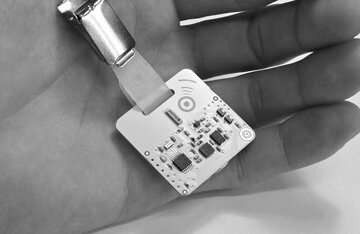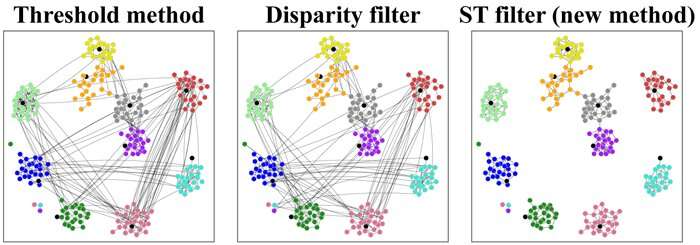Identifying 'friends' in an objective manner: A new method for extracting the backbone of networked social interactions

In recent years, behavioral patterns of social creatures, such as humans, cattle, ants, etc., have been discovered by using wearable sensors called Radio Frequency Identification (RFID) devices (Figs. 1).
The SocioPatterns project
led by Dr. Alain Barrat and colleagues has made public the dataset of contact records of individual pairs collected by RFID devices. However, since the RFID datasets contain any kind of contacts between individuals, they can include non-essential contacts that are observed merely by chance, as opposed to intentional events such as conversation among close friends. Dr. Teruyoshi Kobayashi of Kobe University and his team developed a new
Naturally, the total number of contacts recorded will be larger for those who are socially very active than for those who are shy. This means that counting the numbers of bilateral interactions is not enough to find "friends" in social networks. The new method proposed by Dr. Kobayashi and his team allows one to control for the difference in individuals' activity levels. Interestingly, the extracted significant ties based on face-to-face networks collected in a primary school in Lyon, France form several clusters, each of which accurately mimics an actual school class (Fig. 2). Dr. Kobayashi comments: "It is quite natural that contacts within each class explain most of the significant ties, but this phenomenon is not well captured by the existing methods that were originally developed for static networks."

An advantage of this method is that it can be applied to any kind of dynamic networks formed by bilateral temporal interactions. For example, Dr. Kobayashi and Dr. Taro Takaguchi (one of the coauthors) investigated the interbank market in Italy and confirmed that the fraction of banks that are regarded as being connected by significant ties increased particularly at the time of the global financial crisis in 2008-2009.
On the possibility of future application, Dr. Kobayashi adds: "This method is expected to capture the evolution of various complex networks from interbank markets to a flock of cows. If it's implemented on a face-to-face network of students, for instance, one may be able to detect signs of bullying and/or ostracism."
More information: Teruyoshi Kobayashi et al. The structured backbone of temporal social ties, Nature Communications (2019). DOI: 10.1038/s41467-018-08160-3
Journal information: Nature Communications
Provided by Kobe University


















